Prince Albert to Cape Town International Airport
We decided, on leaving Prince Albert, to back track and take another route through the Swartberg Mountains via the Meiringspoort Pass, following a river between the folded tilted sandstone cliffs. We passed through Oudtshoorn again, travelling along the R62 to Calitzdorp, famous for making port. The imposing Swartberg range accompanied us on our right, as a baboon lazily gets out of the way. We stopped at an Ostrich farm to get close to these big birds.




We stayed in Calitzdorp for two nights catching up and looking around. Calitzdorp is nestled in the trees, again surrounding the church spire. The grapes were being picked while we were there and I snapped what I think is a booted eagle on our walk.




On through yet another Swartberg Mountain pass, the Seweweekspoort, winding for roughly 17 km through grand mountain scenery, crossing the little river that follows the pass floor 23 times. We continued along sand roads where proteas flower alongside the road until we reached Laingsburg on the N1 (the Main Johannesburg/Cape Town highway) which we followed until we stopped at Matjiesfontein. This small town was established in the late 1800’s and hosts the well-known Lord Milner Hotel (no picture as Jen lost her camera card!) where the jolly maitre’d, cum story teller cum honkey tonk piano player regaled us with his hotel ghost story. Although only a small village, the famous Blue Train stops here on its way to Cape Town from Joburg.
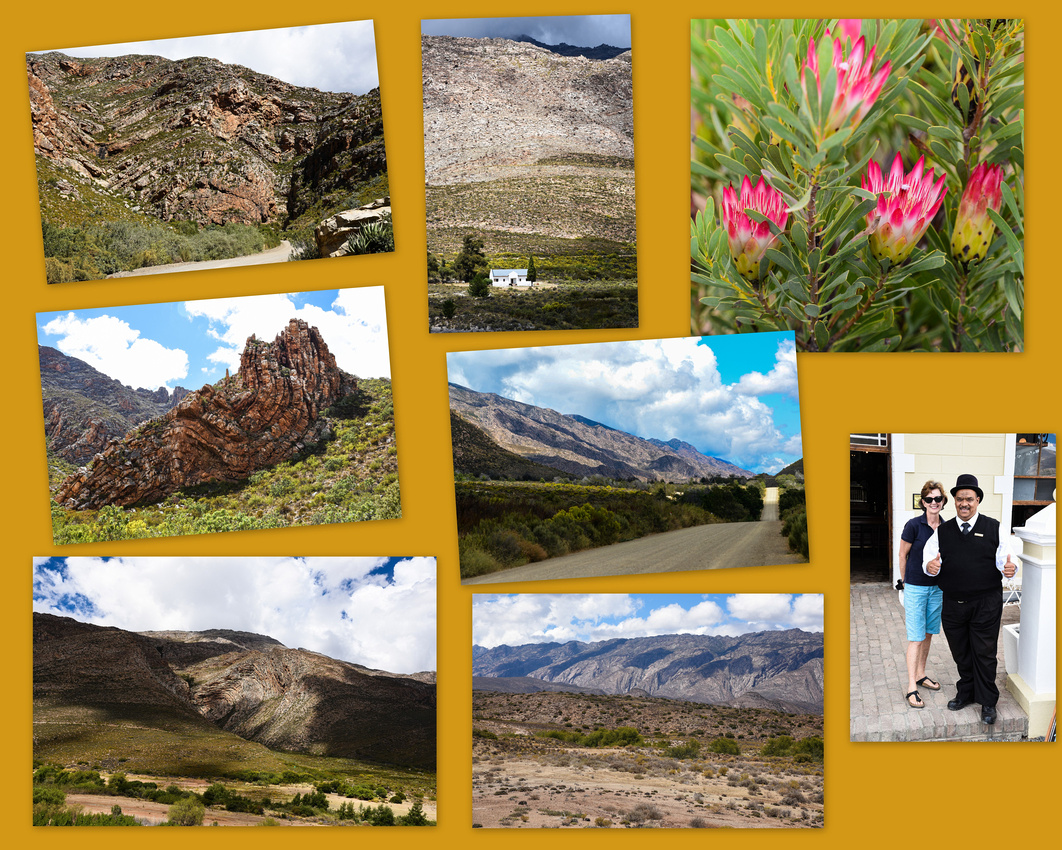

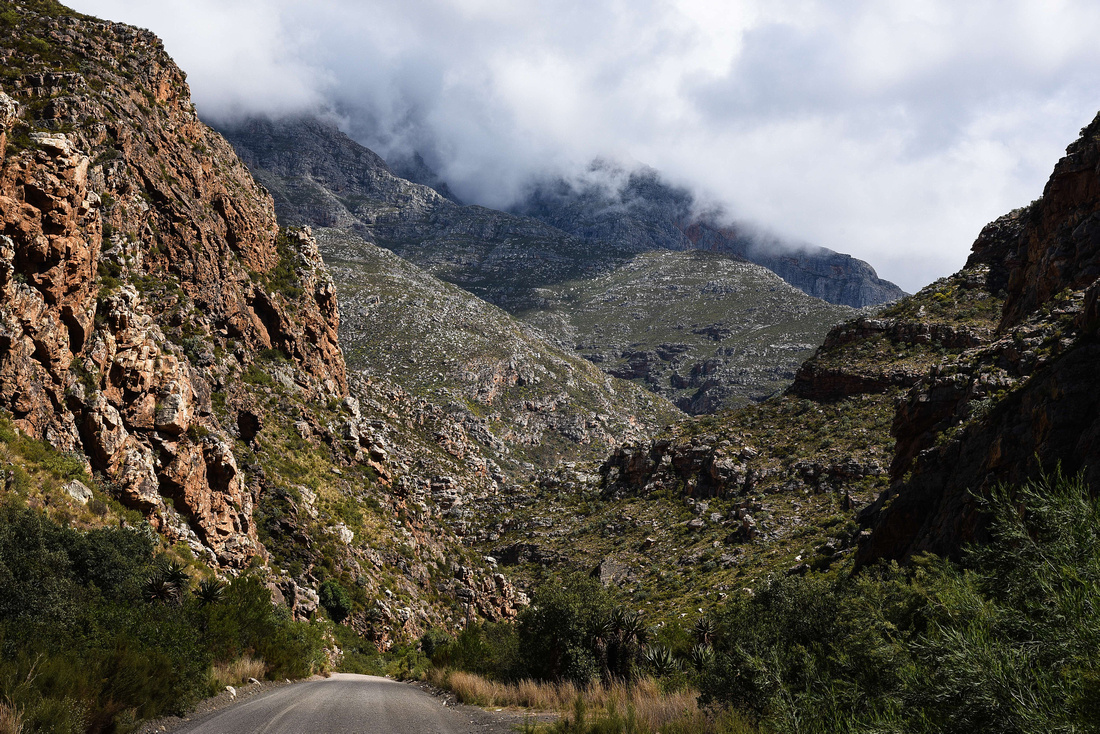

We then headed for Sutherland in the Northern Cape and the Blesfontein Guest Farm 30 kms outside the town. Sutherland's arid climate and remote location 1,450 metres (4,760 ft) above sea level make its night skies among the world's clearest and darkest. The telescopes of the South African Astronomical Observatory are nearby and include the Southern African Large Telescope (SALT), the largest single optical telescope in the southern hemisphere.
Nicol and Marina made us very welcome on the windswept undulating farm where cattle, sheep, geese, horses, chickens and llama make their home. They own a couple of pet pigs, one of which will flop over for a tickle if you show her any attention. A greater kestrel (I think!) observed me from the warmth of the setting sun.
We spent one windy sunset on the escarpment overlooking the Tankwa Karoo National Park to the west while Nicol unveiled his telescope and amusingly explained the southern night skies while we sat wrapped in blankets (it can reach 10 below and snow in winter here). Nicol and Marina told us that the wild flowers here are more numerous and colourful than those in Namaqualand. I had to get a windmill/moon shot!
Before we headed for the Western Cape we toured the observatory. A number of countries run telescopes at this site including Russia and Poland. I rather naively imagined seeing foreign nerdy types wandering around but was surprised to learn that all research information is sent via the internet to interested parties around the world. We were told that a student astrophysicist had to book three years in advance to get half an hour of SALT telescope time.






On leaving the farm we decided that night to stay in the wine growing area of Tulbagh, surrounded by mountains on three sides. The flat Northern Cape country gradually becomes hillier and then mountainous as we move west our progress only halted by a herd of sheep and the need to rescue a small tortoise. We had been told that as you leave the ANC controlled rest of the country, and move into Western Cape Province (run by the Democratic Alliance party) the state of the roads and other infrastructure immediately improves and we concur.


We stayed at the Eikelaan Farm Cottages outside Tulbagh where Lynette and Fanie welcomed us to their lovely farm.


Turning into a sand road we caught a flock of sunbirds swooping through the trees.




We ventured into the town stopping at some of its historical buildings and then meandered through the vineyards stopping at the famous Groot Constantia (brick path leading to its door) built in the late 1600s, demolished in the 1969 earthquake and now painstakingly restored. (I noticed yesterday that Groot Constantia won a world award for best Chardonnay). We watched workers labelling wine at Saronsberg Winery and their stacked oak caskets provided a backdrop to a squatting statue.




Lynette suggested we go to Paternoster, so we did (the benefits of a flexibly planned trip!), travelling through the undulating wheat fields down to the coast where an extremely stiff westerly was blowing (although a bunch of wind turbines stubbornly remained motionless). A friendly board reminded us that we couldn’t take our handguns onto the beach J


Paternoster has evolved into what reminded us of a Greek village with fisherman’s houses interspersed between cottages and tourist accommodation. The town is surrounded by fynbos, the natural shrubland or heathland vegetation occurring in the Western Cape We avoided eating seafood here as a ‘red tide’ or algal bloom had drifted in. Two hundred tons of lobsters died just north of Paternoster walking out of the sea because the algae starved them of them of oxygen. We drove along the coast to the lighthouse at Cape Columbine and beyond to a small beach where seagulls huddled against the wind. A greater kestrel was floating and swooping in the strong breeze around the lighthouse.
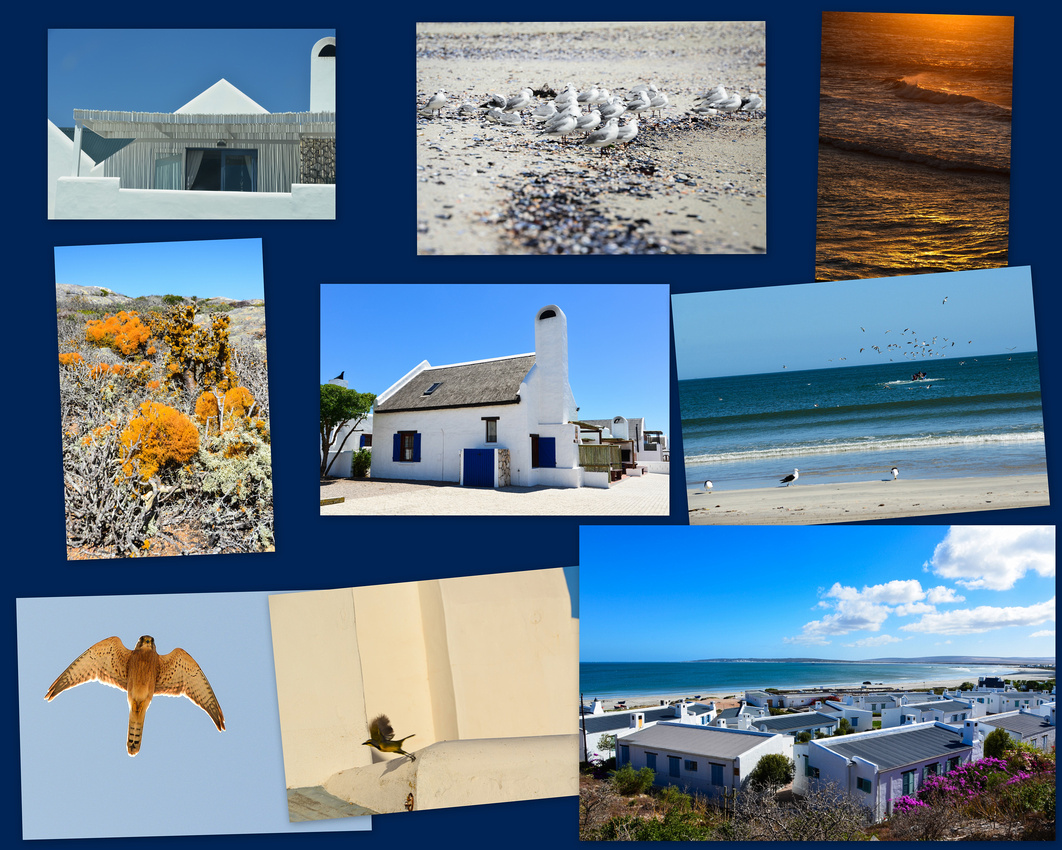



After two nights in Paternoster we travelled to Constantia in Cape Town via the Langerbaan Reserve where we saw egrets and a southern black korhaan, the Koeberg nuclear facility and Bloubergstrand from which you can see Table Mountain looming proudly over the bay. The black Porsche dudes had nothing better to do on a Thursday than cruise up the coast.




At Peddlars on the Bend pub that night I caught up with Steve Woods, Bobby Bertrand, Ian Haddow and Forbes Bullock from the celebrated St Stithian’s class of ’68. The school has never been the same since! Unfortunately Trevor ‘Slice’ Emslie couldn’t make it.
We breakfasted early in Stellenbosch the next morning. Stellenbosch is a university town famous for its wine and good rugby players. Uni had already started (earlier than Oz) and the place was chaotic as there are 28,000 students of which all beyond first year can bring a car. Brisbane parkers will be envious of the parking rates though – Aus $2.50 for 4- 5 hours. We walked around town finding some fun sculptures and a herd of timber giraffes then went to the Skilpad winery to stay the night. It was a bit disconcerting to see a panic button above our bed!
A fellow geology student back in the ‘70s, who now runs an environmental company in Stellenbosch came out and had tea with us. It was interesting to hear about some of the issues Aubrey has running a company in the new South Africa.
The following morning we drove into the winelands for breakfast (Rooibos with a touch of glass) and visited other wineries, seeing more sculptures, before making our way to Durbanville an outer suburb of Cape Town to stay with friends who kindly hosted us for the weekend. Jenny was at primary and senior school with Lynn. We had an excellent couple of days catching up with Lynn and Erith who showed us the sights of their part of the world (see collage a few below).


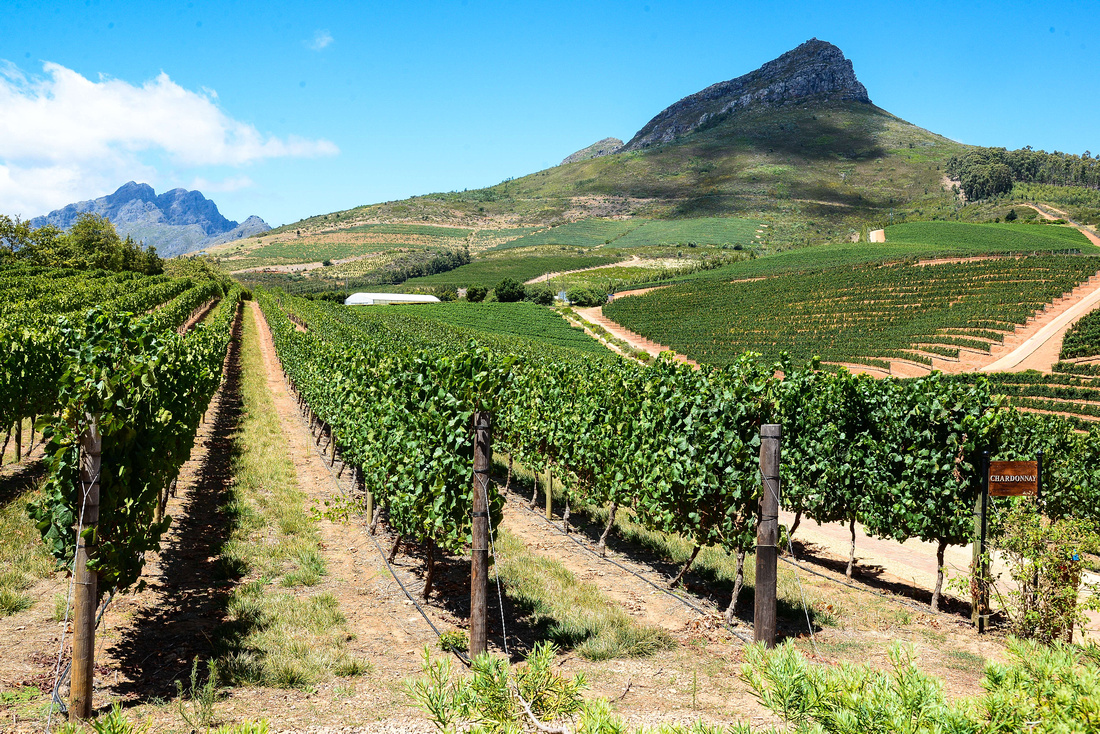

Monday morning saw us winding through the wheatfields on the way to Arniston on the south coast which, if possible, was even windier that Paternoster.


It too is a fishing village which we found not as appealing as Paternoster. We took a stroll in the wind at low tide to see and photograph a cave eroded into the seaside cliff while I found cormorants nesting in the cliff overlooking the waves.




We moved on to Cape Agulhas the southern most tip of Africa via the village of Elim established in 1824 by German missionaries as a Moravian mission station and dominated by white-washed fishermen’s cottages and fig trees. The biggest wooden wheel at any water mill in the country is in Elim. An unimpressed cyclist braves the gravel roads, stationary as we pass. At Agulhas we competed for spots to take photos with a bunch of Harley cruising Germans. In fact, in most places we went in the Western Cape, we heard German – the Euro goes a long way. A parade of ancient Peugeots passed us on the road. A juvenile seagull floated above us at the small Hermanus harbour.




We stayed two nights in Hermanus below the Kleinrivier Mountains visiting the old harbour and walking along the cliff tops. Jenny discovered that a guy she was at junior school with is a local artist in the town.




From Hermanus we drove along the coast dropping in at the penguins at Betty’s Bay, observing some interesting houses in Gordons Bay and generally enjoying driving along the very scenic coastline to Muizenburg where the colourful change rooms still monopolise the main Muizenburg Beach. It was refreshing to observe a microcosm of how SA has changed – a previously disadvantaged guy taking his previously advantaged chick for a surf! As we drove onto De Waal Drive we saw this interesting mural painted on the wall of an apartment building.


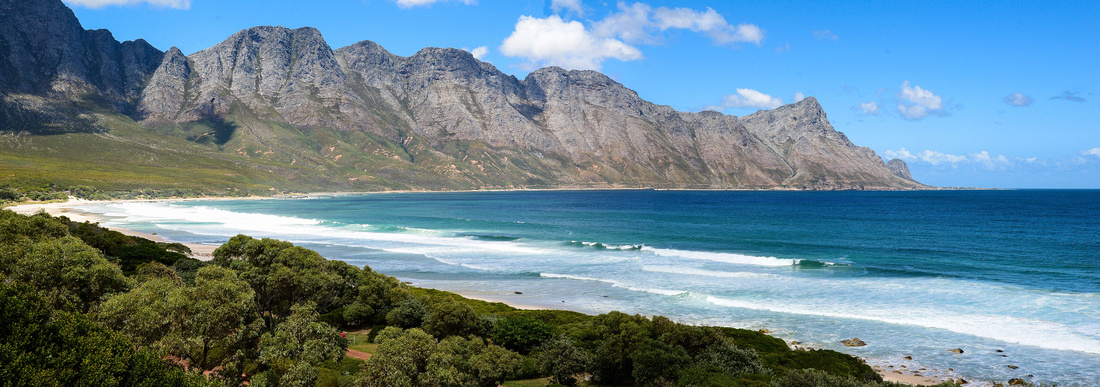



We eventually found our digs in Newlands after going off course into a rather dodgy Cape Town suburb. During our stay we visited the harbour in Hout Bay seeing the clever small home-made toys that are constructed around SA and passing what looked like a double story shack!


We visited the Kirstenbosch Gardens, Jen with a guided tour, me wandering around looking for birds of which I found none – Jen found a double-collared sunbird though. The 'boomslang' enables visitors to walk above the gardens. Some Capetonians found time to take a selfie on the grass.




We also toured the Waterfront where all tourists seem to end up. The view back towards the mountain is well known but I had to put it in. I found some metal Nobel Peace prize recipients gazing implacably out at the visitors while some energetic singers entertained the crowds. There is a warehouse dedicated to products handmade in South Africa.




My great mate Steve Woods who I have known since school had his birthday (celebrated in song by the Beatles on Sargent Pepper) before we left and we celebrated at the Foresters Arms (Forries)– a sad day as well as Cam his daughter left to go back to NZ. It was also a chance for us to meet Harry, son of Samantha and Ade and Steve and Debbie’s first grandchild.




Steve had to go out of town the next day but Debbie kindly hosted us for the last two days while we packed and discarded stuff we couldn’t take with us on our flight to Namibia. We discovered disconcertingly when we got to the airport that we could only take 20 kgs on this flight because it’s a small plane. Which of course is nonsense, because you can take the extra kilos on board as long as you pay!
We were on the bus to take us out to the plane when we were told that the co-pilot was sick and that they had to fly a replacement from Jo’burg, so we left three or four hours late, still beating Jens visa deadline by one day.